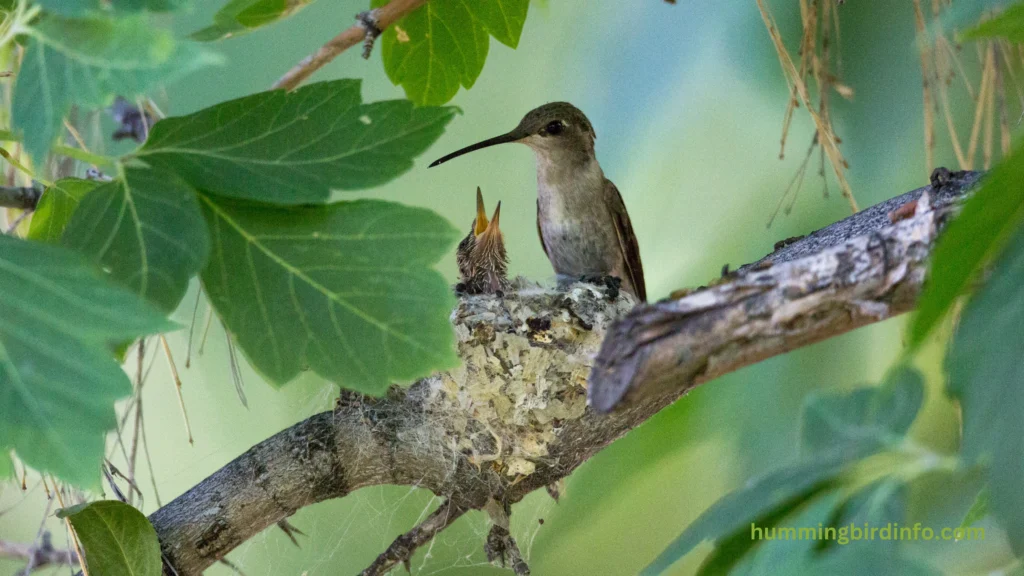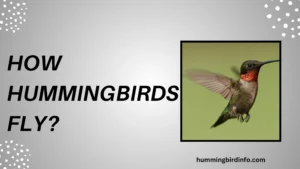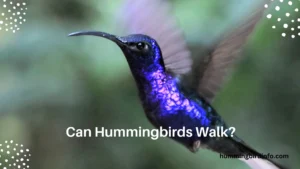Hummingbirds are nature’s acrobats, effortlessly gliding through the air with an elegance that seems almost impossible.
Their ability to hover, fly backward, and dart from flower to flower is already extraordinary enough, but what if these tiny aviators can do something even more unbelievable? Can they fly upside down?
This question has fascinated bird enthusiasts, scientists, and nature lovers alike, challenging our understanding of flight physics and the unique capabilities of these dazzling creatures.
While most birds are restricted to flying in upright positions, the hummingbird’s flight abilities transcend these limits. Their unique wing structure and incredible agility allow them to perform remarkable aerial feats.
But can they really flip over and stay in control while upside down? In this post, we will explore how and why hummingbirds might fly upside down, diving deep into the science behind their aerodynamics and the anatomical adaptations that enable such complex maneuvers.
Understanding this unusual behavior is not just about marveling at their beauty and skill; it’s about unlocking the mystery of how such small creatures can defy gravity and perform aerial stunts that no other bird can replicate.
Ready to explore the physics of hummingbird flight? Let’s dive in.
Contents
- 1 The Unique Mechanics of Hummingbird Flight
- 2 Anatomical Adaptations for Extreme Maneuverability
- 3 Documenting Upside-Down Flight
- 4 Why Would a Hummingbird Fly Upside Down?
- 5 Conclusion:
- 6 FAQs
- 7 1. Can hummingbirds fly upside down?
- 8 2. How do hummingbirds hover?
- 9 3. Why do hummingbirds fly backward?
- 10 4. How fast do hummingbirds beat their wings?
- 11 5. What makes hummingbird flight so unique?
- 12 6. Can hummingbirds fly in any direction?
The Unique Mechanics of Hummingbird Flight
Basic Bird Flight vs. Hummingbird Flight
Most birds achieve flight by creating lift with a combination of downstroke and upstroke wing movements. In contrast, hummingbirds generate lift on both the upstroke and downstroke through a figure-eight motion.
This allows them to hover in place and make quick, sharp turns. Unlike typical birds, hummingbirds don’t rely on forward motion to create lift. Instead, their wing structure gives them unparalleled control in the air.
Figure-Eight Wing Motion
Hummingbird wings move in a figure-eight pattern, a key feature that enables them to hover. This motion is what makes their flight so different.
By rotating their wings in such a way, they can generate lift on both the upstroke and downstroke, allowing them to remain suspended mid-air or maneuver with extreme precision, including flying upside down.
Wing Structure and Flexibility
The shoulder joint of a hummingbird is highly flexible, allowing their wings to rotate up to 180 degrees.
This flexibility enables them to achieve extreme angles during flight, which is essential for maneuvers such as hovering, flying backward, and even potentially flying upside down. Without this flexibility, such advanced flight patterns would be impossible.
High Wing Beat Frequency
Hummingbirds beat their wings at an incredibly high rate—up to 80 beats per second. This rapid movement creates the necessary lift for hovering and quick directional changes, helping them to stay in control while executing complex maneuvers, including inverted flight.
The sheer speed of their wingbeats also contributes to their exceptional agility.
Center of Gravity and Balance
Hummingbirds have a low and stable center of gravity, which helps them maintain balance during flight. This, combined with the unique wing structure, allows them to make swift, multi-directional movements.
Whether hovering or briefly flipping upside down, their balance remains intact, enabling these remarkable flight feats.
Anatomical Adaptations for Extreme Maneuverability
Specialized Shoulder Joint
A hummingbird’s shoulder joint is uniquely adapted for flight. The ball-and-socket design allows for near-180 degree rotation, enabling their wings to move in any direction.
This joint flexibility is essential for their ability to perform aerial acrobatics such as flying upside down, especially when they need to access nectar in difficult-to-reach flowers or navigate complex environments.
Powerful Flight Muscles
Hummingbirds have disproportionately large flight muscles, which account for up to 30% of their body weight. These muscles generate the rapid, powerful wingbeats required for their high-speed flight.
Without such strength, upside-down flight would not be feasible, as the birds would lack the control and stability needed to perform such a maneuver.
Skeletal Adaptations
The skeletal structure of hummingbirds is designed for flight. Their sternum is enlarged to support strong flight muscles, while certain bones are fused for greater stability and strength during flight.
These skeletal adaptations give hummingbirds the physical ability to execute complicated movements, including those involved in flying upside down.
Cardiovascular and Respiratory Systems

Hummingbirds have a large heart relative to their size, pumping blood at an accelerated rate to meet the high oxygen demands of their muscles.
Their efficient respiratory system ensures that they can maintain the high-energy flight required for both hovering and complex maneuvers, including inverted flight.
Documenting Upside-Down Flight
Challenges of Observation
Observing hummingbirds in action is challenging due to their small size, speed, and unpredictable movements. Capturing the rare moments of upside-down flight requires patience and specialized equipment.
Their rapid wingbeats and sudden directional changes make it difficult to analyze their movements in real-time.
High-Speed Photography and Videography
To study hummingbird flight in detail, researchers use high-speed cameras to capture their movements in extreme slow motion.
This technology has allowed scientists to document their aerial skills, including their ability to fly upside down for short periods. By analyzing frame-by-frame footage, they can examine the physics behind their flight and the specific muscle movements that enable it.
Scientific Studies and Research
Several studies have focused on hummingbird flight mechanics, especially in relation to their hovering abilities and flight agility.
Research suggests that while hummingbirds can briefly fly upside down, this behavior is rare and often happens during high-speed maneuvers. The ability to do so is likely an evolutionary advantage, allowing hummingbirds to adapt to different feeding scenarios.
Anecdotal Evidence and Observations
Birdwatchers and researchers have reported occasional sightings of hummingbirds briefly flipping upside down. However, these moments are often fleeting and may result from momentary disorientation rather than intentional flight.
The rapid and unpredictable nature of their flight makes it hard to discern whether the upside-down movement is an intentional maneuver or a brief error.
Why Would a Hummingbird Fly Upside Down?
Feeding in Unusual Positions
One reason a hummingbird might fly upside down is to access nectar from flowers that require inverted positions. Some flowers, like the trumpet vine, may have long, curved tubes that are easier to reach when a hummingbird positions itself upside down.
Maneuvering in Complex Environments
Hummingbirds often fly in dense, complex environments, such as thick vegetation or crowded gardens. Upside-down flight could help them navigate these spaces more efficiently, giving them an edge in avoiding obstacles or escaping predators.
Courtship Displays
Some species of hummingbirds engage in courtship flight displays to attract mates. These displays could involve aerial acrobatics, including flying upside down, as a way for males to show off their agility and physical prowess.
Predator Avoidance
Flying upside down might also serve as a defensive tactic. By quickly flipping over in mid-flight, a hummingbird might confuse or evade a predator, making it harder for the attacker to follow their movements.
Insects Capture
Hummingbirds catch small insects mid-flight, and sometimes an upside-down flight position might give them an advantage in picking up prey. This could be particularly useful when insects are hiding or camouflaged in certain types of flowers or vegetation.
Brief Disorientation vs. Intentional Flight
It’s important to distinguish between an intentional upside-down maneuver and a momentary loss of control during a high-speed turn. While hummingbirds may occasionally flip over in the heat of flight, this behavior is most likely brief and doesn’t signify a complete lack of control.
Conclusion:
Hummingbirds are truly among nature’s most remarkable aviators, and their flight capabilities continue to awe us.
Their ability to hover, fly backward, and maneuver with incredible precision sets them apart from all other birds. The question of whether they can fly upside down is just one more fascinating aspect of their extraordinary abilities.
While hummingbirds can briefly fly upside down, the reasons behind this behavior are still being explored. It could be tied to feeding, maneuvering through dense environments, or even courtship rituals.
Although rare, these remarkable birds continue to challenge the boundaries of what we know about flight.
As we observe these tiny creatures, we’re reminded that there’s still so much we don’t understand. The world of hummingbirds, with all its complexity and mystery, is a reminder that nature’s wonders are still full of surprises.
FAQs
1. Can hummingbirds fly upside down?
Yes, hummingbirds can briefly fly upside down, but this is rare and often occurs during complex maneuvers or feeding.
2. How do hummingbirds hover?
Hummingbirds hover by generating lift during both the upstroke and downstroke of their wings, using a figure-eight motion.
3. Why do hummingbirds fly backward?
Hummingbirds can fly backward due to their flexible wing structure and ability to generate lift on both strokes.
4. How fast do hummingbirds beat their wings?
Hummingbirds beat their wings at an incredible speed, up to 80 times per second.
5. What makes hummingbird flight so unique?
Their wing structure, high wing beat frequency, and flexible shoulder joint give them unparalleled control and agility in flight.
6. Can hummingbirds fly in any direction?
Yes, hummingbirds can fly in all directions, including upward, backward, and even inverted for short periods.








